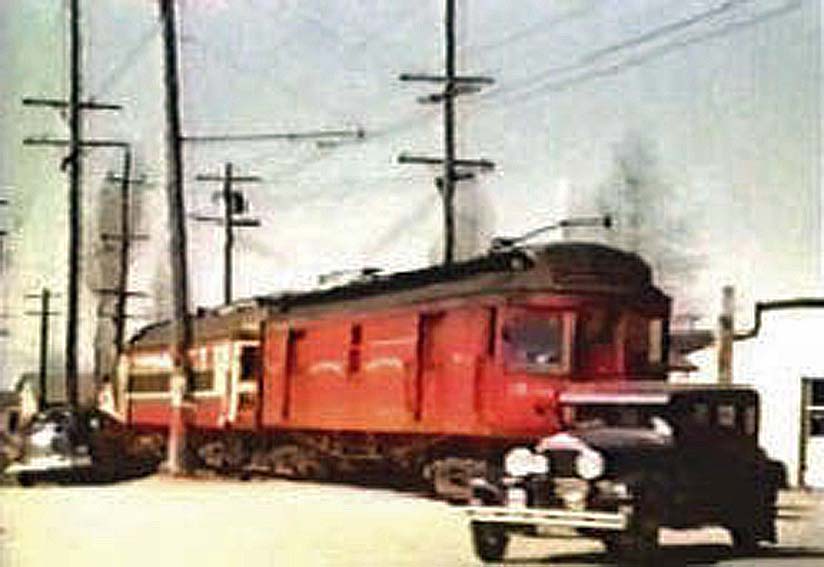


Langley British Columbia - It appears technically possible to run a rapid transit rail service from Surrey's Scott Road SkyTrain Station all the way to downtown Langley.
But it would be tricky and expensive.
Those are the key findings of consultants hired by TransLink to take a first look at the feasibility of reopening passenger rail service on the old electric interurban rail route, which linked Vancouver to Chilliwack until it was shut down in the 1950s.
Rough cost estimates range from $350 million for a diesel-powered heavy rail system with nine stations to $700 million for an electric light rail system that would be more frequent and allow 16 stations along the 27-kilometre route.
The study by DRL Solutions Inc. shows possible station locations and assumed frequent service - not the peak-only service offered by the West Coast Express from Vancouver to Mission.
The concept so far hasn't been at the top of TransLink's vision to serve projected growth in Surrey and Langley.
"It wouldn't stand out as our first choice," said Graeme Masterton, TransLink's program manager of transit planning.
Instead, bus rapid transit, eventually replaced by light rail lines, are eyed for King George Highway and 104 Avenue, and potentially the Fraser Highway and Highway 1.
But reviving the historic interurban route has captivated rail fans and gained momentum.
Surrey city council voted this fall to hire its own project manager to explore a community rail option on the route. A volunteer group is restoring old interurban cars in hopes of launching a heritage run for tourists.
And even TransLink has said all ideas are on the table as it works with locals to draw up a new South of Fraser area plan to chart the future of transit as the sub-region grows from 600,000 now to one million by 2031.
"We said "Okay, let's have a look," said TransLink spokesman Ken Hardie. "What would it take to make it happen?"
A lot, it turns out.
The consultants tabled a long list of challenges:
Advocates of the interurban route are undeterred.
"We did not see anything that was a show stopper," said former Surrey and Langley Township planner Terry Lyster, who is a member of VALTAC (Valley Transportation Advisory Committee).
"Those are large numbers," he said of the cost estimates. "But the numbers to build new crossings of the Fraser River are much larger."
He noted the per kilometre costs are less than a quarter of construction costs for TransLink's new $1.9 billion Canada Line or $1 billion proposed Evergreen Line.
Getting a fair shake in transit spending is one of the motives at play - some see TransLink sucking plenty of money out of Surrey and Langley residents and investing most of it in deluxe transit systems north of the river.
"They've run out of money and they've done nothing for the South of the Fraser area," charged Peter Holt, executive director of the Surrey Board of Trade.
He and others suspect the transportation authority has engineered the study to inflate the costs and squash the interurban rail route aspirations.
Lyster also believes a community passenger rail service along the line can be started at less cost than projected.
They argue double tracking the existing Southern Railway of B.C. line through Surrey - a major cost driver - isn't necessary as long as there are lots of stations with sidings where passenger trains would allow freight trains to pass.
And some say it could be done even more cheaply just as far as Cloverdale, truncating the more complex leg to Langley.
"It can technically be done," said Allen Aubert, one of Surrey's two reps on TransLink's South of Fraser planning committee. "I think it's fairly positive."
He sees a community railway powered by hydrogen fuel cells that could be a demonstration project in time for the 2010 Olympics, drawing support from the government's Hydrogen Highway initiative.
"It could be quite unique and completely pollution free," said Aubert.
One hydrogen fuel station already exists. It's run by B.C. Hydro's Powertech Labs in Surrey and is located on 88 Avenue, precisely where that road intersects the old interurban line.
TransLink and local rail advocates agree on at least one thing: people mainly need to move between neighbourhoods in Surrey and Langley, not commute to downtown Vancouver.
That's backed up by TransLink research that shows more than 85 percent of trips by residents south of the Fraser stay within the region.
Twice as many people commute from Surrey to Langley or vice-versa than go to downtown Vancouver.
Those stats persuaded TransLink that what's needed isn't a peak-hours only commuter service geared only to get Surrey and Langley residents to the SkyTrain and on to Vancouver.
TransLink officials promise more work to explore the potential of the interurban route. The next step, to happen by the end of 2007, is to estimate potential ridership and revenue - key elements for determining the viability of a service.
Because higher density development would surely follow a light rail line, TransLink will also be looking to Surrey council for guidance.
Opposition from city hall would likely sink the route, officials hint, while strong support could catapult it into serious contention.
FOUR OPTIONS
Heavy Rail Diesel Push-Pull
Heavy Rail Diesel Multiple Units
Light Rail - Diesel Multiple Units
Light Rail - Electric Multiple Units
NOTE: Some costs, like acquiring property, engineering and environmental studies, aren't included, but an extra 30 percent is built in for contingency.
STATIONS
The route runs initially southwest from the Scott Road SkyTrain station to the Scott Road corridor, then angles southeast to Cloverdale and east to Langley.
The following station sites were tentatively identified:
The light rail option shows five stations strung through the downtown core, ending at Kwantlen College.
The heavy rail route runs further north, closer to Langley Bypass and the Willowbrook Mall.
Author unknown.